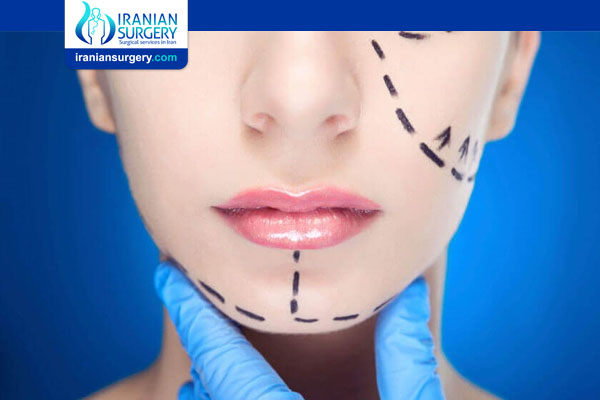Type of face lift
Facelift Types
Facelifts have been around for decades, but medical innovations and technology mean that today, we have many types of facelifts available. Today’s facelifts range from non-surgical facelifts to minimally invasive, to full surgical options. Your priorities in terms of facelift scars, recovery time, and facelift results will help guide the decision for which type of facelift may be best.
As we age, there are inevitable changes to our faces. And while we can help keep a youthful appearance by eating well and taking care of our skin, there is no way to stop some of the telltale signs of aging like sagging skin, wrinkles, or a loss of definition in the face. The good news is that even though we cannot prevent these visible effects of aging, we can reverse them and give a more youthful, firm, bright look to the face.
The many types of facelifts available allow a wide variety of people to find a treatment that will help them achieve the look they want. Today’s technology, and our surgeons’ expertise, also allow us to perform these procedures so that facelift incisions are smaller, facelift scars are less noticeable, and facelift scar healing is faster.
Read more about : Plastic surgery
Read more about : Eyelid surgery in Iran(Blepharoplasty)
Read more about : All information about types of rhinoplasty by Dr.Maryam Mosleh
Different Types of Facelift
- The mini-facelift
The mini-facelift targets aging in the lower face, including minimal skin sagging, early jowls, and excess skin. This procedure is not designed to address heavy jowls or severe signs of facial aging, but it can create a more uplifted, smoother facial contour. The best candidates for this procedure are younger patients with the aforementioned characteristics of aging who desire a more youthful and well-defined lower face and neck.
- The mid-facelift
The mid-facelift targets cheek sagging to rejuvenate the midface region. This procedure elevates the tissues of the cheeks to eliminate sagging and reduce deep creases. Best for patients who do not have jowls or excess skin sagging in the neck, the mid-facelift can enhance facial definition, create more attractive cheek contours, eliminate nasolabial folds, and even improve the lower eyelids. It can also be incorporated with other facial procedures if needed.
- The deep plane facelift
The deep plane facelift targets severe cheek and neck aging. This procedure lifts the muscle tissue and skin to correct heavy cheeks, neck sagging, and skin laxity. Long recognized for its ability to produce the most natural-looking and longest-lasting facelift results, the deep plane facelift can yield a refined and rejuvenated appearance. Research has shown that patients look at least five years younger after a deep plane facelift and still look better five and a half years after their surgery than they did before. This gives the best and longest-lasting result in facelift surgery.
- The Silhouette Instalift
The Silhouette InstaLift uses dissolvable sutures and cones to anchor the cheeks and re-suspend sagging facial structures such as jowls, cheeks, nasolabial folds, and excess neck skin. The Silhouette InstaLift procedure mitigates many signs of aging with very little downtime, ultimately encouraging the body’s natural process of producing collagen around the threads. The procedure is typically used around the cheeks, brows, jawline, and neck in order to restore structure and youthful orientation to the face.
Patients often wish to correct sagging facial tissue, such as jowls along the jawline, mild drooping skin under the chin (“turkey neck”), descending cheeks, and deep creases from the outer nostrils to the corners of the mouth (nasolabial folds). The best candidates for this procedure are younger patients who aren’t quite ready for a full surgical facelift.
- Neck liposuction
Neck liposuction targets excess fat in the neck and even the jowls. This procedure is often combined with facelift surgery to eliminate surplus fat that accumulates beneath the chin. This procedure may be appropriate for individuals who would like to eliminate a double chin and flatten prominent jowls. The best candidates have minimal laxity of the neck skin.
- Ultherapy®
Ultherapy® is a non-surgical treatment that can lift and tone sagging, loose skin along the jawline and under the chin, and it can even raise your brows. Using ultrasound energy, Ultherapy® stimulates the foundational tissues and support layers of the skin to help tighten early jowls and early skin laxity. This procedure is best for younger patients, those who would like to preempt the need for surgery, patients who may not be ready for surgery, or patients who wish to prolong the effects of a previous facelift procedure.
- Liquid Facelift
Injectable dermal fillers made from hydroxyapatite, hyaluronic acid, or lactic acid calcium, can be used to non-surgically smooth creases and folds, plump lips, and fill hollowing areas. Today, some of the most popular fillers include Juvederm, Voluma, and Sculptra. Treatments with dermal fillers are a great way to prevent or delay the need for facelift surgery.
Source:
. https://www.mdface.com/blog/6-types-facelifts/
. https://www.westlakedermatology.com/blog/common-facelift-types/


